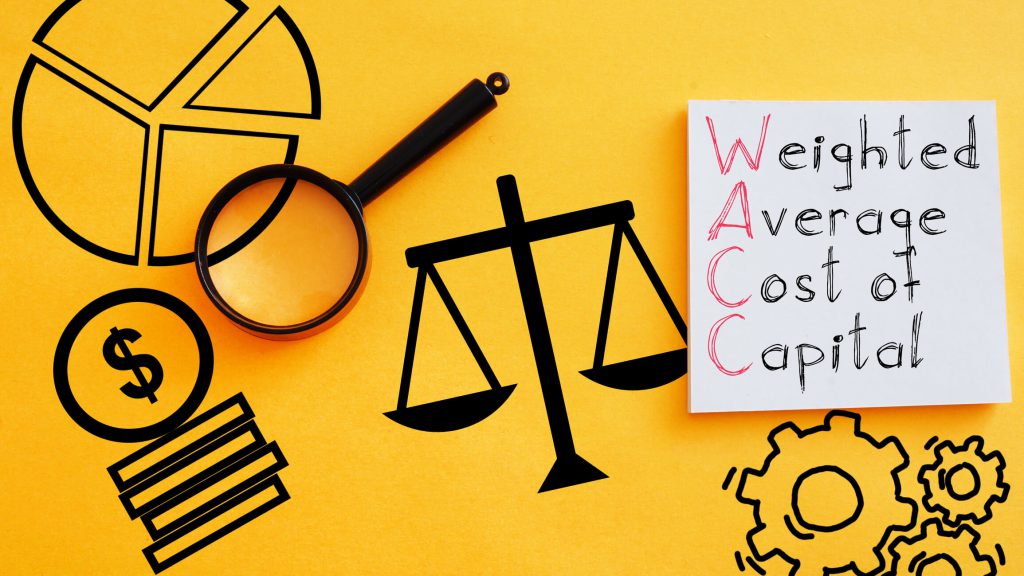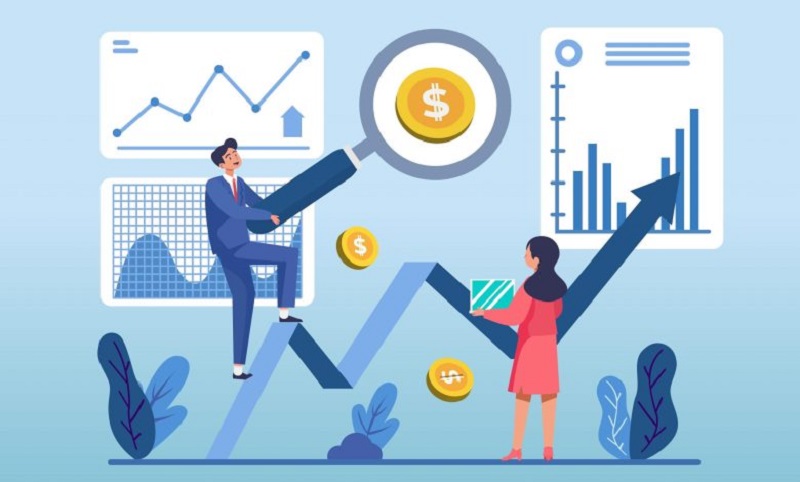In the modern business context, making financial decision Wisdom is the key to everyone's success. enterprise. One of the most fundamental and important concepts in corporate finance What managers need to master is What is the cost of capital?. Understanding this term not only helps investment project evaluation but also the basis for optimization. capital structure and improve operational efficiency.
Bizzi With a comprehensive cost management solution set following international standard professional processes, we understand that effectively managing all types of costs - including costs related to capital – is the key factor to save time and resources for enterprise. Let's dig deeper into cost of capital.
What is the cost of capital?
In essence, cost of capital (also known as cost of capital) can be understood as opportunity cost of use capital to invest into one enterprise or project. It represents required rate of return (required rate of return) that suppliers capital – including both creditors (lenders) and owners own (shareholder) – expected to receive when providing capital give enterprise, based on the level risk that they bear.
This concept can be viewed from two perspectives:
- For Enterprises (capital users): This is the amount expense (although not always in cash) enterprise must accept to obtain and maintain the right to use the resource capital there.
- For Investors (capital providers): This is Required Return or discount rate that they use to Evaluate see account invest enter enterprise is worthy of risk to give up or not to give up
To put it more simply, the cost of capital is the “price of using money”. Economists say that the essence is the opportunity cost of using that capital to invest in businesses.
To meet capital needs, businesses or business people must mobilize from many sources. These sources are classified into two main categories, namely debt capital and equity capital. Each different type will have a different cost of capital.

Why is cost of capital important in financial management?
Identify cost of capital is an indispensable step in financial management enterprise because it serves several key purposes:
- Investment Project Appraisal and Evaluation: The cost of capital commonly used as discount rate (or profit barrier – hurdle rate) to calculate the Net Present Value (NPV) of the investment project. One project is considered financially viable when its expected rate of return exceeds cost of capital. It helps answer the question as in the example given: will the purchase of new machinery create profit enough to compensate expense of number capital to give up or not to give up
- Business Valuation: The cost of capital is a core element in the models. business valuation based on discounted cash flow (DCF), which helps determine value present of enterprise.
- Financial Decision Making and Capital Structure: Understanding cost of capital help enterprise show decision on how to mobilize capital new (debt or equity) and maintain capital structure optimized to minimize total cost of capital and maximize Enterprise value.
- Performance Evaluation: Compare the actual rate of return of enterprise or project with cost of capital help measure and Evaluate efficiency of use capital.
Characteristic of cost of capital
To understand the cost of capital in depth, it is necessary to grasp the following fundamental properties:
- Capital type: The cost of capital depends on type of capital but enterprise use. There are two Main ingredients: cost of debt (cost of debt) and cost of equity (cost of equity). Each type has its own characteristics and ways of determining it. expense different.
- Risk: This is the most influential attribute. The level risk belong to enterprise or project proportional to Required Return of the house invest. Risk higher leads to cost of capital higher and vice versa. Risk Okay reflect enter required rate of return.
- Required Return: The cost of capital is required rate of return good expected return of suppliers capital. This is the minimum profit level that project or enterprise need to be achieved to satisfy the stakeholders capital.
- Capital structure: Proportion between debt capital and equity in total resources capital belong to enterprise (capital structure) directly affects cost of capital weighted average.
- Issuance costs: When mobilizing capital new (both debt and equity) equity), enterprise must bear the expense related fees such as consulting fees, underwriting, advertising, etc. issuance costs This also needs to be taken into account when determining cost of capital reality.
What factors determine the cost of capital?
The cost of capital not fixed fluctuation based on the impact of many factors:
Objective factors (Market)
- Market interest rate: Level interest rate common on financial market direct impact on cost of debt and indirectly to cost of equity. Interest rate high increase cost of capital.
- Corporate income tax policy: Interest To be expense deductible when calculating tax, create tax shield (tax shield) reduce cost of debt effective. Tax rate high then tax shield big, reduce cost of capital borrow more
- Macroeconomic situation: Inflation, economic growth, political stability… all affect risk and Required Return above market.
Subjective factors (Business)
- Investment policy: If enterprise invest into the project Have risk higher than level risk industry average, Required Return from home invest will increase, increase cost of capital.
- Financing Policy (Capital Structure): Increasing the proportion debt capital compared to equity increase financial risk, leading to Required Return for both creditors and owners own all increased (except for the benefit from tax shield at reasonable debt levels).
- Dividend policy: Impact on retained earnings (internal equity). However, it should be noted that cost of capital from retained earnings is not zero but is opportunity cost, equivalent cost of capital owner New release.

Types of cost of capital
As mentioned, cost of capital is composed of two Main ingredients:
- Cost of Debt (Rd): To be expense but enterprise pay for use capital borrow (from) bank, bond issuance…). This is usually interest rate loan or yield to maturity of the bond, after adjustment by tax shield. Cost of debt after tax = Rd * (1 – Tc).
- Cost of Equity (Re): To be Required Return of common shareholders invest enter enterprise. Determination cost of equity more difficult because there is no explicit commitment like interest. It is usually estimated by model like Capital Asset Pricing Model (CAPM) or Dividend Growth Model. CAPM Calculate Re based on interest rate fly risk, risk system (beta) and compensation risk market.
Weighted Average Cost of Capital (WACC) is the most commonly used index to measure total cost of capital belong to enterprise, reflects expense average of each coin capital mobilize from all sources according to capital structure present or target.
Formula for calculating WACC:
WACC = (E/V) * Re + (D/V) * Rd * (1 – Tc)
In there:
- Re: Cost of equity
- Rd: Cost of debt before tax
- E: Total value market belong to capital owner (Market capitalization)
- D: Total value market belong to debt capital
- V: Total value market belong to capital enterprise (V = E + D)
- (E/V) and (D/V): Proportion of equity and debt capital in total capital
- Tc: Tax rate business income
Other features
In addition to the basic properties and calculations, there are some advanced aspects to note:
- Marginal Cost of Capital: To be cost of capital of copper capital finally mobilize more. It is important when enterprise need to mobilize a quantity capital big for the project new, helps identify capital scale appropriate mobilization before cost of capital started to increase significantly.
- Tax Shield Effect: As said, interest reduce taxable income, creating benefits for tax. Calculation cost of debt after tax has included this effect, making debt capital seems cheaper equity in terms of expense clear.
- Project Cost of Capital vs. Corporate Cost of Capital: When Evaluate one project Have risk significantly different from risk average belong to enterprise, should use cost of capital exclusively for project that instead of the WACC of the whole enterprise.
Meaning of cost of capital
- Evaluate financial decisions: provides important information for companies and investors to make decisions about financial resource allocation. This helps determine how to finance or invest in a company's projects and capital structure.
- Evaluate investment opportunities: assist companies and investors in assessing various investment opportunities. By converting future cash flows into present value through discounting, the cost of capital helps make decisions about investing in the most profitable projects.
- Budget management: Play a role in setting the company's budget. It helps management use the company's financial resources to achieve business goals and minimize capital costs.
- Measure progress: Combining project progress with capital use, the cost of capital can be used to measure the progress of a project or investment. It helps to determine whether the project is progressing as planned and delivering the expected financial benefits.
- Optimizing capital and debt: provides useful information for companies that need to expand their business operations. It helps optimize the use of capital and maintain the lowest debt level to meet shareholders' wishes.
Bizzi Automate and streamline strategic processes based on cost of capital
However, to be able to give these financial decision strategy based on cost of capital and other complex indicators, enterprise need to have a foundation financial management strong, especially the ability to control and Effective management of all types of costs daily activities. This is where Bizzi bring value.
With a comprehensive set of solutions to help cost management business effective and time-saving according to international standard professional process, Bizzi Automate and streamline resource-intensive processes such as Invoice processing, manage payment requests, and report expenses. Freeing up time and manpower from these manual tasks not only helps enterprise save expense directly but also provide data finance more clear, more precise
Bizzi's trusted data platform is a prerequisite for developers manage can analyze deeply about cost of capital, project evaluation accurately, and give the financial decision strategic to optimize capital structure and enhance competitiveness on market.
In short, while mastering the theory of cost of capital is necessary for financial management At the high level, the application of technological solutions such as Bizzi to manage the effectiveness of expense The foundation is the lever that helps enterprise achieve capital efficiency maximize and realize sustainable growth goals. Discover now how Bizzi can help enterprise your cost management Smarter today!
Follow Bizzi to quickly receive the latest information:
- Facebook: https://www.facebook.com/bizzivietnam
- Linkedin: https://www.linkedin.com/company/bizzi-vietnam
- Youtube: https://www.youtube.com/@bizzivietnam
Conclude
Clearly understand What is the cost of capital?, how to identify and the influencing factors are a solid foundation for any financial decision important, from investment project appraisal arrive business valuation and optimization capital structure. It is not just a number but key indicators reflect level risk and Required Return belong to market for enterprise. Job manage and optimization cost of capital directly contribute to the increase Enterprise value and capital efficiency.

>> See more: What is Bootstrapping?
>> See more: Explain the term “Account Payable”


